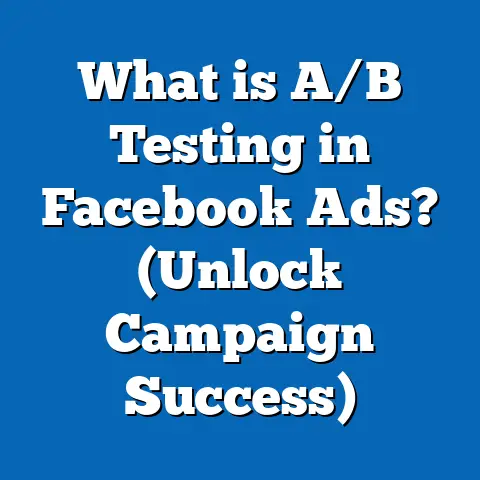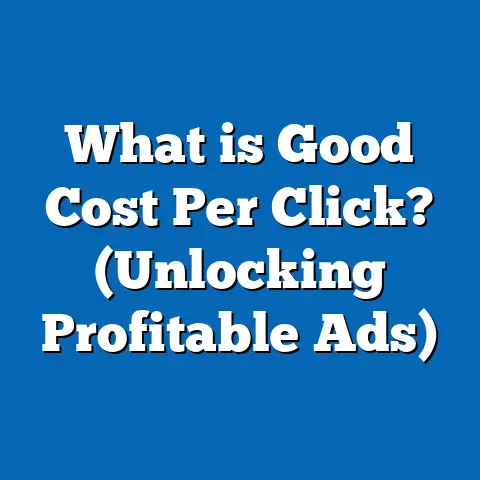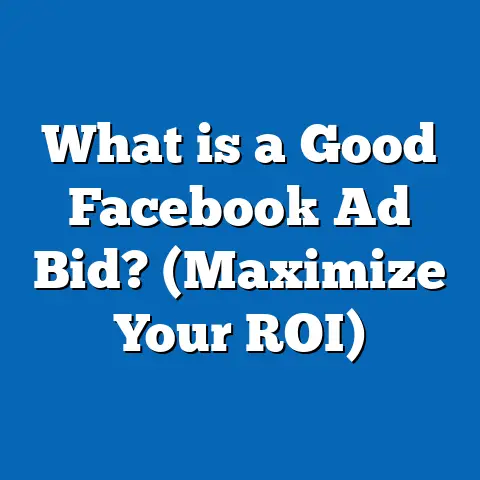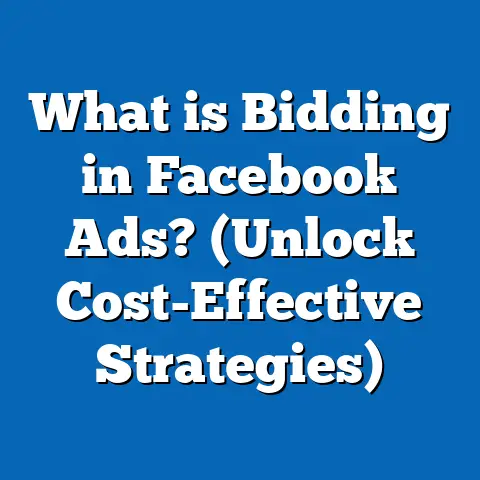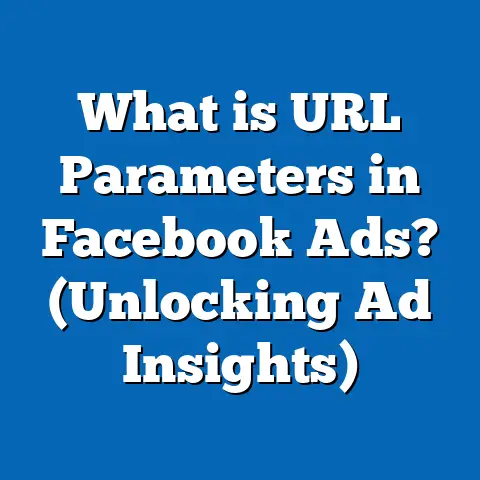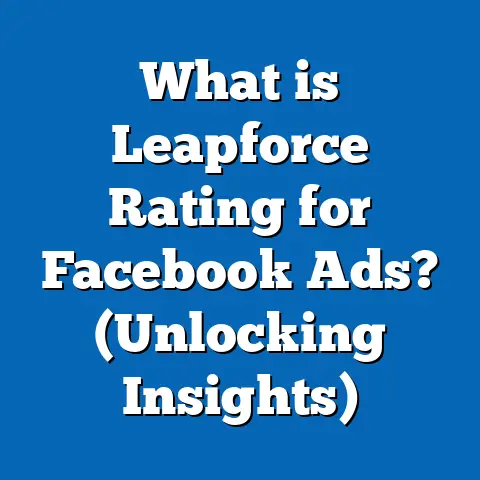What is the cheapest way to run Facebook ads? (Budget Secrets)
What is the Cheapest Way to Run Facebook Ads? (Budget Secrets)
Introduction: Remember the Early Days of Marketing?
Remember walking into a store and seeing posters, flyers, or billboards promoting a sale? Or when TV commercials were the primary way to reach millions? Marketing once was a game of mass appeal and hefty budgets. Fast forward to today’s digital age—Facebook advertising has transformed how businesses reach customers. It offers precision targeting, real-time analytics, and budget flexibility that old-school marketing could never match.
Yet, despite these advantages, many business owners and marketers struggle with Facebook ad costs. The question remains: How can you run Facebook ads cheaply without sacrificing results?
Understanding Facebook Ads: Foundations for Budget Success
How Facebook Ads Work: The Auction System Explained
Facebook ads operate within an auction framework. Every time an ad space becomes available, advertisers “bid” for it. However, winning the auction is not just about who bids the most; Facebook factors in ad quality and user relevance.
- Bid: The maximum amount you’re willing to pay per action (click, impression, conversion).
- Ad Quality: Measured by engagement rates, user feedback, and relevance.
- Estimated Action Rates: Facebook predicts how likely a user is to take the desired action.
Together, these determine which ad wins placement.
Why is this important? Because higher ad quality lowers your cost. If your ad is engaging and relevant, Facebook rewards you with better placement at a lower price.
Key Metrics That Influence Ad Cost
- Cost Per Click (CPC): Amount paid when someone clicks your ad.
- Cost Per Mille (CPM): Cost per 1,000 impressions.
- Cost Per Action (CPA): Cost paid for a specific action like purchase or signup.
- Click-Through Rate (CTR): Percentage of people who clicked your ad after seeing it.
- Relevance Score: Facebook’s rating from 1-10 on how relevant your ad is to your target audience.
Average Costs Across Industries
According to WordStream’s 2023 data:
| Industry | Average CPC | Average CPM |
|---|---|---|
| E-commerce | $0.70 | $8.40 |
| Finance | $3.72 | $11.50 |
| Health & Fitness | $1.32 | $10.10 |
| B2B | $2.00 | $12.00 |
| Education | $1.06 | $9.70 |
Knowing these benchmarks helps set realistic expectations and goals for your budget.
Setting Your Facebook Ads Budget: A Step-by-Step Approach
Step 1: Define Clear Objectives
Your budget ties directly to your campaign goals:
- Brand Awareness: Typically measured via CPM campaigns; cheaper but less direct ROI.
- Traffic Generation: CPC campaigns focused on driving visitors.
- Lead Generation/Conversions: CPA campaigns with higher costs but measurable sales or signups.
Step 2: Calculate Your Customer Value
To budget wisely, estimate how much a new customer is worth to your business.
Example:
If your average customer spends $100 and you want at least a 3x return on ad spend (ROAS), you should aim for a CPA no higher than about $33.
Step 3: Start Small and Scale
- Begin with $5-$10 daily budgets to gather data.
- Test multiple audiences and creatives.
- Scale budgets gradually as you identify winning ads.
Step 4: Allocate Budget Across Campaign Types
A balanced approach might include:
- 50% on prospecting (new audiences).
- 30% on retargeting warm audiences.
- 20% on brand awareness or engagement campaigns.
Detailed Strategies for Running Facebook Ads Cheaply
1. Target Narrow, High-Intent Audiences
Broad targeting wastes money on uninterested users. Instead:
- Use Custom Audiences from email lists or website visitors.
- Create Lookalike Audiences based on top customers.
- Layer interests with demographics for precision.
Case Study:
An online fitness coach used a custom audience of prior webinar attendees combined with interest targeting around “home workouts.” This reduced CPC from $2.50 to $0.80 and increased conversion rates by 40%.
2. Campaign Budget Optimization (CBO)
Let Facebook optimize budget distribution across ad sets.
- CBO adapts in real-time to allocate funds where ads perform best.
- Reduces wasted spend on underperforming ads.
Data Insight:
Advertisers using CBO saw an average cost reduction of 20% compared to manual budget allocation (Facebook Business report, 2023).
3. Craft Engaging Ad Creative
Ads that capture attention cost less because Facebook favors relevant content.
Tips:
- Use videos or carousel ads over static images.
- Keep copy concise and benefit-focused.
- Include a clear call-to-action (CTA).
Statistic:
Video ads have a 26% lower CPC than image ads (HubSpot 2023).
4. Optimize Ad Scheduling
Run ads during times your audience is most active:
- Use Facebook Insights for audience behavior data.
- Avoid running ads during low-engagement hours to save money.
5. Retargeting Campaigns: The Highest ROI Strategy
Retarget users who already showed interest:
- Website visitors in last 7-30 days.
- Users who added items to cart but didn’t purchase.
- Video viewers of your content.
Case Study:
An e-commerce brand used dynamic retargeting showing abandoned cart products and cut CPA by 70%.
Advanced Budget Optimization Techniques
Manual vs Automatic Bidding
Automatic bidding maximizes results but can overspend in competitive niches.
Manual bidding allows you to cap bids:
- Useful if you know your maximum acceptable CPA.
- Requires monitoring and adjustment.
Example:
Manual bids capped at $1 CPC kept costs steady for a small retailer in a competitive market.
Facebook Pixel: The Secret Weapon for Cost Reduction
The Pixel tracks user behavior after clicking ads:
- Enables conversion tracking beyond clicks.
- Powers lookalike audiences based on actual buyers.
- Allows optimization toward valuable actions rather than clicks alone.
Value-Based Lookalike Audiences
Instead of generic lookalikes, weight customers by purchase value for better targeting.
Research shows:
Value-based lookalikes reduce CPA by up to 15% compared to regular lookalikes (Facebook internal studies).
A Deeper Dive Into Ad Formats: Which Are Cheapest?
Image Ads
Simple and cost-effective for brand awareness but less engaging than videos.
Video Ads
Higher engagement leads to better relevance scores and lower CPCs.
Carousel Ads
Multiple images/products in one ad; great for e-commerce with strong CTRs.
Collection Ads
Mobile-friendly immersive experience; good for showcasing product range affordably.
Data:
Video ads typically deliver a 30%-50% lower CPC than image ads; carousel ads often outperform single images in CTR by 10%-20%.
Comparison With Other Advertising Platforms
| Platform | Avg CPC | Avg CPM | Strengths | Budget Suitability |
|---|---|---|---|---|
| $0.50 – $3.00 | $7 – $12 | Precise targeting, broad reach | Small to large budgets | |
| Google Ads | $1.00 – $6.00 | N/A | Intent-driven, search-based | Medium to large budgets |
| Instagram Ads | $0.70 – $3.50 | $8 – $14 | Visual branding, younger audience | Small to medium budgets |
| LinkedIn Ads | $5.00 – $10+ | $25 – $40 | B2B targeting | Larger B2B budgets |
Facebook offers the most affordable social platform advertising with unmatched targeting options, especially useful for small businesses.
Real-Life Case Studies: Deep Analysis
Case Study 1: Local Bakery’s Budget-Friendly Ads
Budget: $150 over 30 days ($5/day)
Goal: Increase foot traffic and local awareness
Strategy:
- Custom audience from email list (loyal customers).
- Video ad showcasing fresh bakery products.
- Scheduled ads during morning hours (7–9 AM).
Results:
- CPC reduced from $1.50 to $0.60 after two weeks optimization.
- Foot traffic grew by 25%.
- ROI of 3x ad spend after one month.
Case Study 2: E-Commerce Brand’s Retargeting Success
Budget: $500 monthly
Goal: Recover abandoned carts and increase purchases
Strategy:
- Installed Facebook Pixel for detailed tracking.
- Created dynamic product retargeting campaigns showing exact products left in carts.
- Used value-based lookalike audiences for new customer acquisition.
Results:
- CPA dropped from $45 to $13 in retargeting campaigns.
- ROAS improved from 2x to over 5x.
- Overall sales increased by 40%.
Common Pitfalls That Increase Facebook Ad Costs
- Overly Broad Targeting: Leads to wasted impressions on uninterested users.
- Ignoring Ad Relevance Scores: Low relevance causes Facebook to charge more.
- Not Using Conversion Tracking: Results in inefficient budget allocation.
- Audience Overlap: Competing against yourself drives up costs.
- Under-testing Creatives: Missing out on better-performing ads.
- Setting Unrealistic Budgets Too Soon: Leads to poor data and wasted spend.
Latest Trends Impacting Facebook Ad Costs in 2024
Privacy & Data Changes
Apple’s iOS updates limit tracking, requiring smarter attribution models and more focus on first-party data like email lists.
AI-Powered Ad Tools
Facebook’s AI optimizes creative delivery and audience targeting automatically, helping reduce cost per result.
Growth of Video & Reels Ads
Short-form video content commands higher engagement at lower costs compared to static images or long videos.
Increased Focus on Instant Conversions
Businesses prioritize campaigns that generate quick sales or leads over long-term awareness due to tighter budgets post-pandemic.
Practical Implementation Checklist: Running Budget-Friendly Facebook Ads
| Task | Details | Priority |
|---|---|---|
| Set clear campaign objectives | Awareness, traffic, conversion | High |
| Calculate customer lifetime value | Determine max CPA | High |
| Define narrow target audiences | Custom & lookalike audiences | High |
| Create multiple ad creatives | Test videos, images & carousels | High |
| Set up Facebook Pixel | Track conversions accurately | High |
| Use CBO for budget distribution | Optimize spend automatically | Medium |
| Schedule ads during peak times | Use Insights for timing | Medium |
| Launch retargeting campaigns | Target warm leads | High |
| Monitor daily performance & adjust bids | Manual bidding if needed | High |
| Analyze & scale winning campaigns | Increase budget cautiously | High |
Summary: How to Run Cheapest Yet Effective Facebook Ads?
- Get crystal clear on your campaign goals before setting budgets.
- Use precise audience targeting — custom audiences + lookalikes.
- Leverage Facebook’s automation tools like CBO for better budget allocation.
- Create engaging ad creatives focusing on video content.
- Retarget users who already showed interest; they cost less and convert better.
- Use Facebook Pixel for accurate tracking and optimization.
- Test manual bidding if automatic bids are too high.
- Stay informed about privacy changes and adapt your strategy accordingly.
Final Thoughts: Making Every Dollar Count on Facebook Ads
Facebook advertising offers incredible potential for businesses of all sizes—if you know how to navigate its complexities wisely. By focusing on targeted audiences, creative excellence, smart budgeting strategies, and ongoing optimization, you can run highly affordable campaigns that deliver measurable results.
Running cheap Facebook ads doesn’t mean cutting corners—it means working smarter with data-driven decisions and continuous testing.
If you want, I can provide additional resources such as:
- A detailed Excel budget planner template
- Step-by-step video tutorials on setting up CBO campaigns
- Sample audience personas tailored for different industries
- A glossary of key Facebook ad terms for beginners
Would you like me to prepare these resources?

